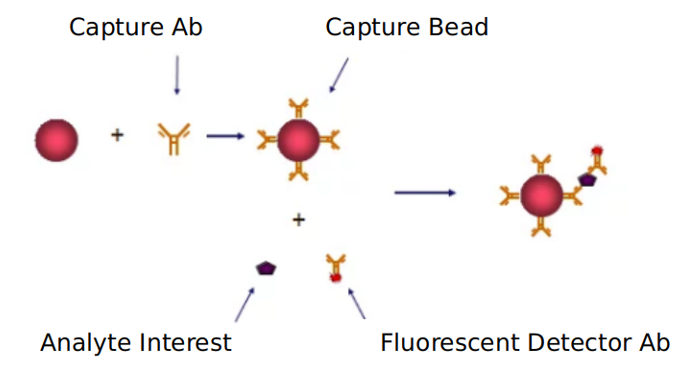Obese signaling pathway
Based on Luminex technology platform, Creative Proteomics provides analysis services for key targets of obese signaling pathway.
 (Dostalova I, et al., 2019)Obesity is a common group of metabolic disorders. When the body eats more calories than it consumes, the excess calories are stored in the body in the form of fat, and the amount exceeds the normal physiological needs and reaches a certain value, then it evolves into obesity. Previous studies have shown that obesity gene (ob) and leptin, uncoupling protein gene (ucp), hypothalamic appetite regulation network and other related factors all play an important role in the development of obesity.
(Dostalova I, et al., 2019)Obesity is a common group of metabolic disorders. When the body eats more calories than it consumes, the excess calories are stored in the body in the form of fat, and the amount exceeds the normal physiological needs and reaches a certain value, then it evolves into obesity. Previous studies have shown that obesity gene (ob) and leptin, uncoupling protein gene (ucp), hypothalamic appetite regulation network and other related factors all play an important role in the development of obesity.
Tyrosine phosphatase 1B (PTP1B), an enzyme-like protein in the obesity signaling pathway, plays an important role in the regulation of body weight. PTP1B has been found to counteract the effects of the hormone leptin, which is produced by adipocytes and suppresses appetite. When PTP1B is lacking, organisms remain lean even though they have access to an unlimited high-fat diet.
Obesity is not only closely related to insulin resistance, but is also one of the major factors inducing the development of type 2 diabetes. c-Jun amino-terminal kinase (JNK) family is a member of the mitogen-activated protein kinase (MAPK) superfamily, and a variety of factors such as cytokines, growth factors, and stress responses can activate the JNK-centered JNK signaling pathway. Numerous studies have shown that activated phosphorylated JNK in insulin resistance negatively regulates the insulin signaling pathway, and insulin resistance can be co-regulated by multiple JNK signaling pathway-related pathways at the same time.
Our detectable targets:
| RTK | PI3K | TYK2 | STAT1 | STAT2 | STAT3 |
| TNFR | ISGF3 | MSK2 | PI3K | TBK1 | Vav |
| STAT5 | IRAK4 | JNK | MYD88 | Rac1 | TLR4 |
| CREB | IRF3 | MAPK | NAP1 | Rel | TLR9 |
| MHC-II | IRS1 | MEK6 | p50 | SLP76 | TRAM |
| TCR | icam1 | Mda-5 | NFκB | RIG-1 | TRAF3 |
| GAS | IRF9 | MEKK1 | p38 | RIP1 | TRAF5 |
| PSGL1 | IRS2 | MSK1 | TLR3 | Tak1 | TRIF |
| CD3 | IRF5 | MEK3 | p38MAPK | SH2 | TRAF6 |
| Fas | ISRE | mTOR | PKR |
Technology platform:
We provide Luminex technology for obese signaling pathway analysis.
Luminex technology is a multifunctional liquid phase analysis platform, mainly based on the successful development of applied fluid science, colored microspheres, high-speed digital signal processing and laser technology. Its core is the use of fluorescent dye encoding polypropylene or magnetic two kinds of microspheres. By adjusting the different ratios of the above two fluorescent dyes, no more than 100 microspheres with different fluorescence spectra can be obtained. Reactions including nucleic acid hybridization, enzyme-substrate, antigen-antibody, ligand-receptor binding, etc. are performed on microspheres with different fluorescent codes. Using laser detection technology, qualitative and quantitative analysis of microsphere encoding and reporting fluorescence.
Advantages of obese signaling pathway detection:
- High throughput: It can analyze more than 100 target molecules in the same sample at the same time.
- Low sample consumption: Due to the small size of the microspheres, samples as low as 1 puL can be detected, and 100 different target molecules can be detected simultaneously in the same reaction well, which greatly saves the amount of sample.
- The operation is simple and quick: the liquid phase system is adopted, the reaction time is fast, and the detection of various cytokines can be completed within 2-3 hours.

Application of our service:
- Study the impact of each clinical virus on the obese signaling pathway
- Research on the regulatory mechanism of obese signaling pathway in medicine
Creative Proteomics has developed a signaling pathway target detection platform. We can provide detection services not only for obese signaling pathways, but also for other signaling pathways. If you want to detect other targets, please contact us in advance and we will customize the service for you according to your requirements. Looking forward to working with you.
References:
- Haws RM, et al. Clinical study experience of the MC4R agonist setmelanotide in the treatment of rare genetic disorders of obesity: Results from Bardet-Biedl syndrome and Alström cohorts in a phase 2 open-label study. Presented at: Keystone Symposia on Molecular and Cellular Biology: Functional Neurocircuitry of Feeding and Feeding Disorders. Cell Cycle, 2019, 10-14.
- Dostalova I, Roubicek T, et al. Increased serum concentrations of macrophage inhibitory cytokine-1 in patients with obesity and type 2 diabetes mellitus: the influence of very low calorie diet. Eur J Endocrinol, 2009, 161(3): 397-404.



